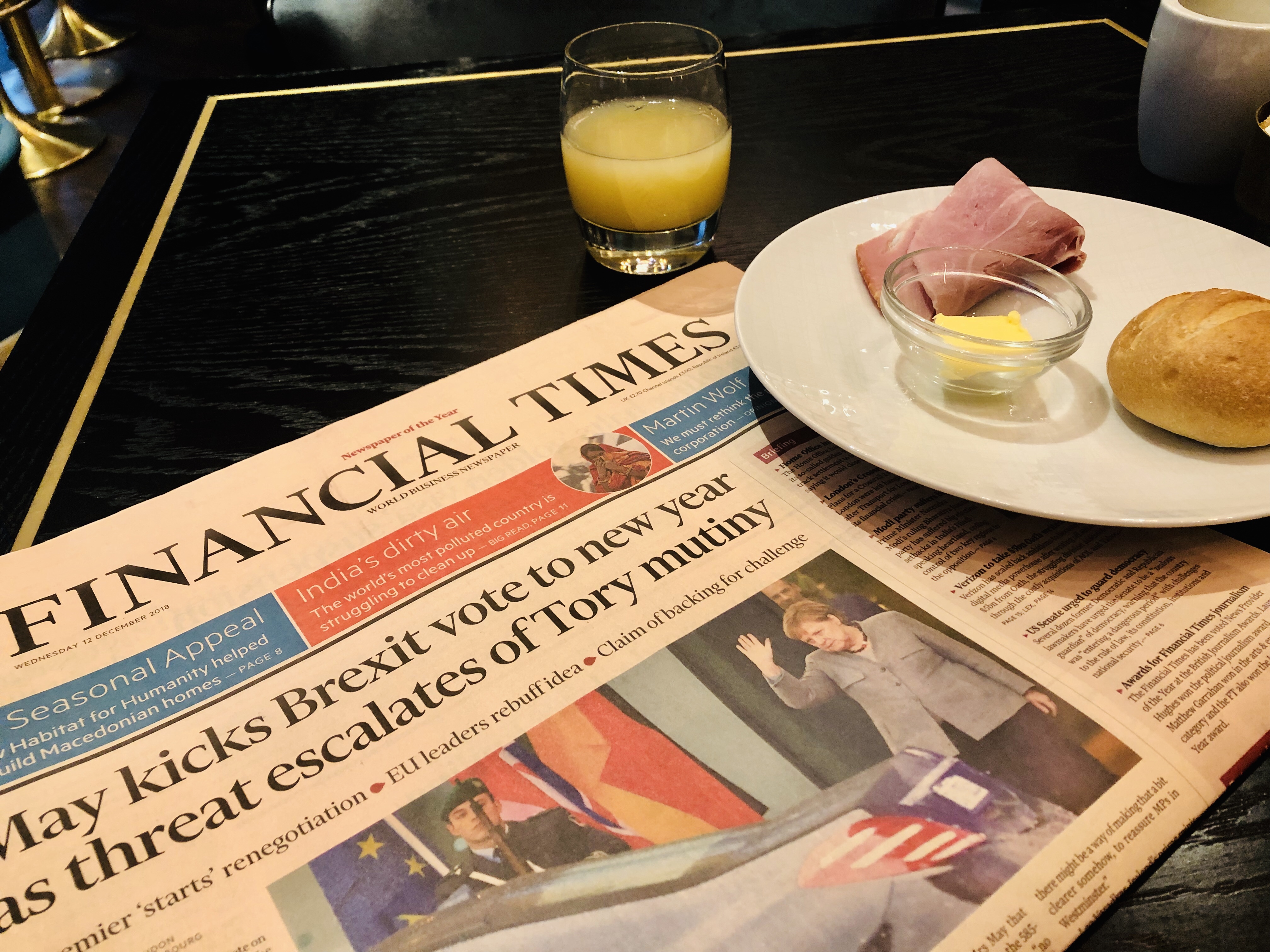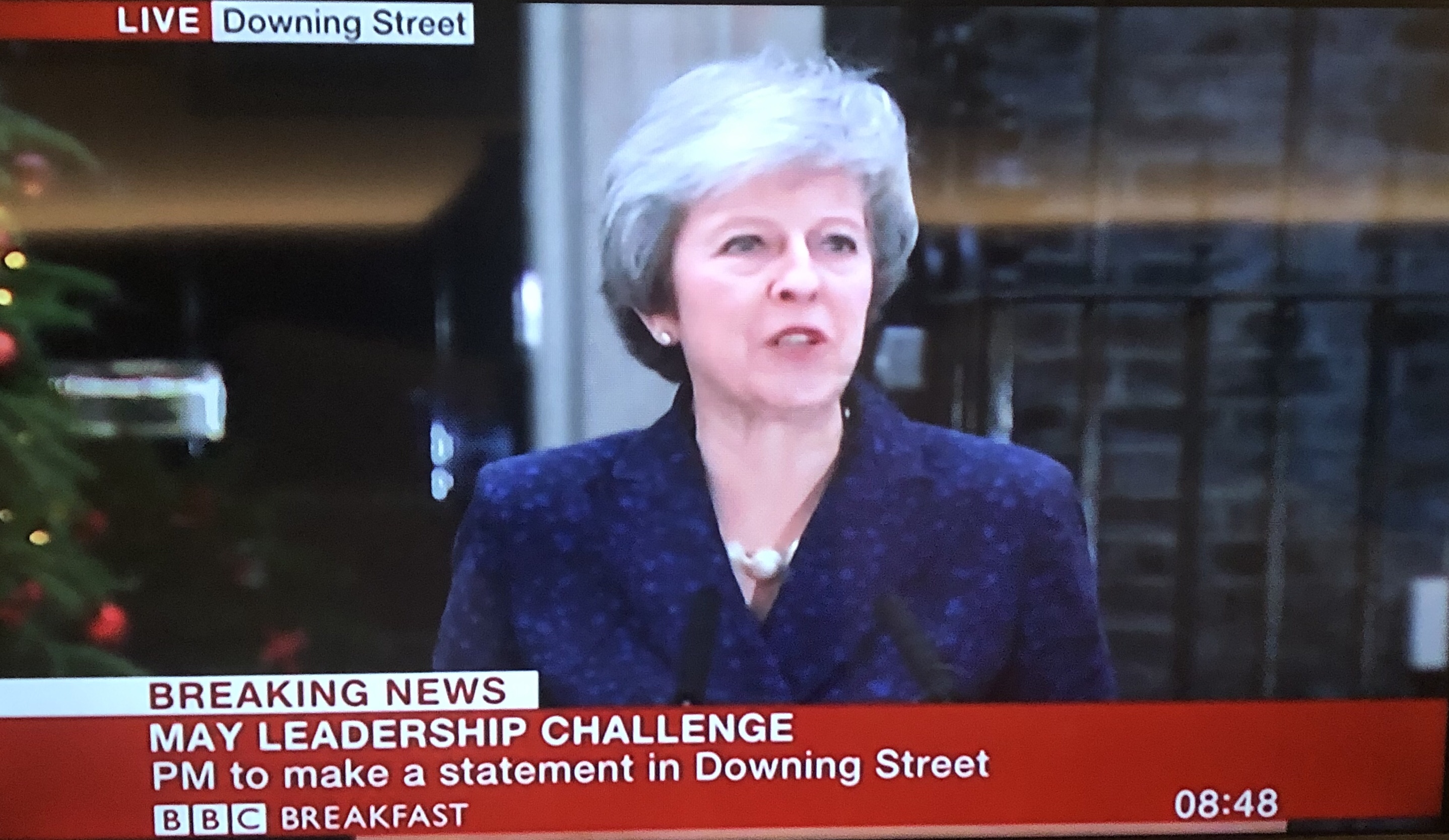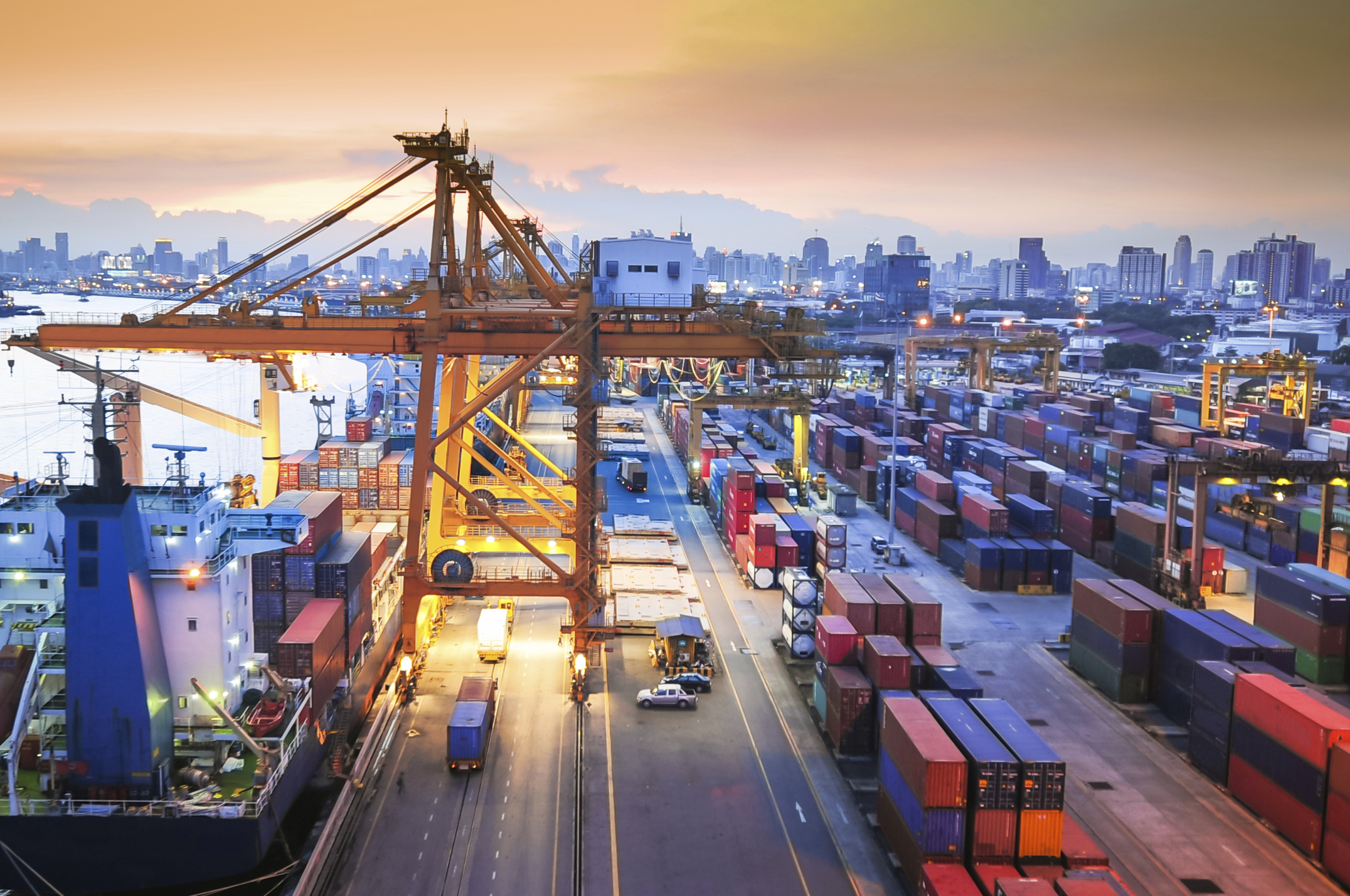Tried at breakfast to prepare for todays’ Brexit discussions in London, I just passed DS100 and heard the latest in the statement from PM Theresa May.

It will indeed be an interesting day. PM May should have travelled to Dublin today for further talks with Irish PM before EU Council meeting on Brexit Deal and Irish backstop tomorrow.
Now it is another story to write. History in front of our eyes.
Theresa May will face vote of no confidence from Tory MPs tonight between 6-8pm tonight in a secret ballot.

The PM is dedicated to fight for her position and maintain her role as PM and leader of the Tory party. May is scheduled to meet the leaders of the EU 27 for continued dialogue around the Brexit deal and the withdrawal agreement.
The Nobel Peace Prize 2018 was awarded jointly to Nadia Murad and Denis Mukwege.

The Prize was awarded “for their efforts to end the use of sexual violence as a weapon of war and armed conflict.”

There have rarely been more worthy winnners. This was a really good decision.






You must be logged in to post a comment.